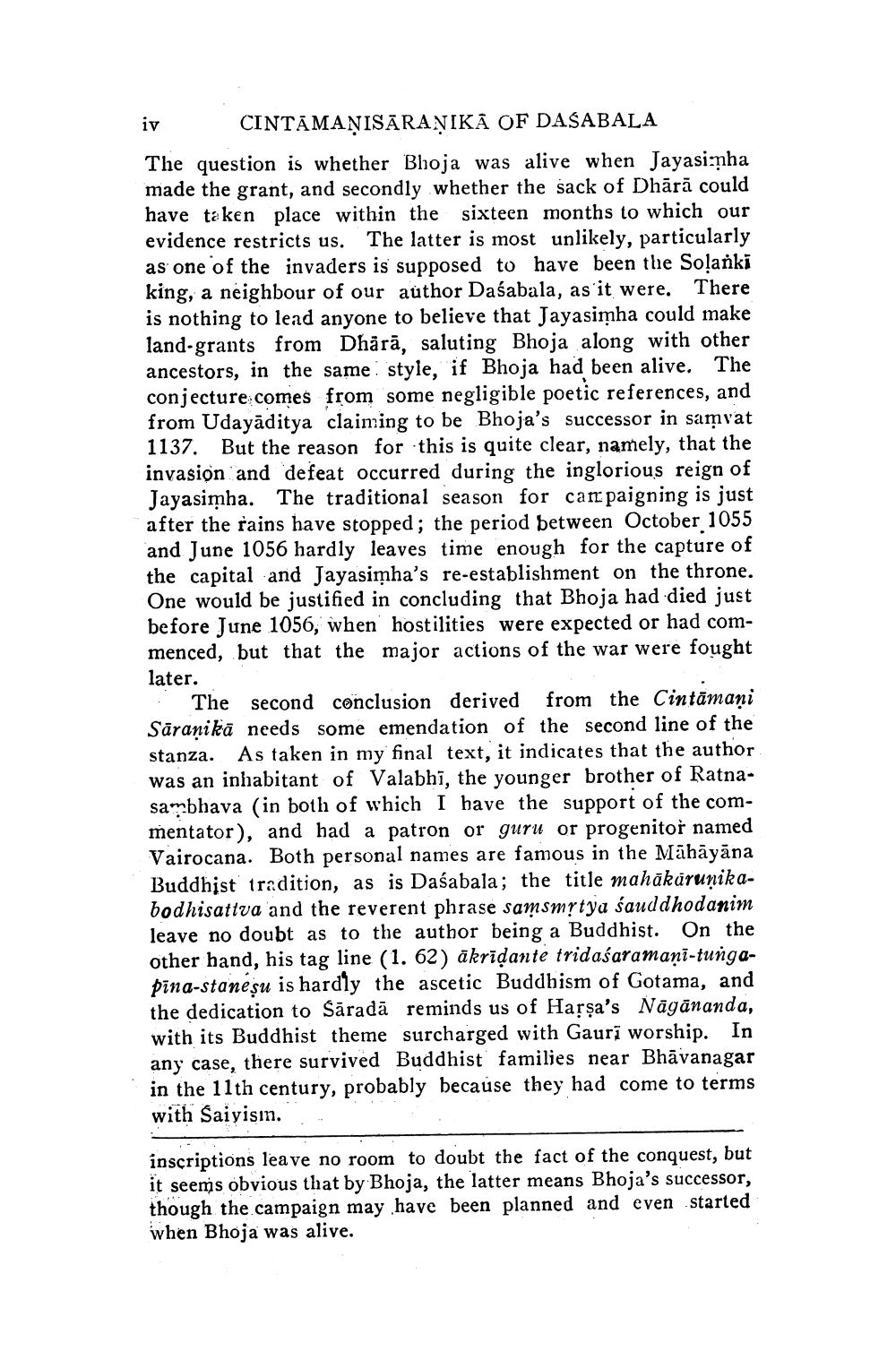Book Title: Cintamani Sarnika Of Dasabala Author(s): Dharmanand Kosambi Publisher: D D Kosambi View full book textPage 2
________________ iv CINTAMANISARANIKA OF DASABALA The question is whether Bhoja was alive when Jayasinha made the grant, and secondly whether the sack of Dhārā could have taken place within the sixteen months to which our evidence restricts us. The latter is most unlikely, particularly as one of the invaders is supposed to have been the Solanki There king, a neighbour of our author Daśabala, as it were. is nothing to lead anyone to believe that Jayasimha could make land-grants from Dhārā, saluting Bhoja along with other ancestors, in the same style, if Bhoja had been alive. The conjecture comes from some negligible poetic references, and from Udayaditya claiming to be Bhoja's successor in samvat 1137. But the reason for this is quite clear, namely, that the invasion and defeat occurred during the inglorious reign of Jayasimha. The traditional season for campaigning is just after the rains have stopped; the period between October 1055 and June 1056 hardly leaves time enough for the capture of the capital and Jayasimha's re-establishment on the throne. One would be justified in concluding that Bhoja had died just before June 1056, when hostilities were expected or had commenced, but that the major actions of the war were fought later. The second conclusion derived from the Cintamani Sāraṇikā needs some emendation of the second line of the stanza. As taken in my final text, it indicates that the author was an inhabitant of Valabhi, the younger brother of Ratnasambhava (in both of which I have the support of the commentator), and had a patron or guru or progenitor named Vairocana. Both personal names are famous in the Mahāyāna Buddhist tradition, as is Daśabala; the title mahākarunikabodhisattva and the reverent phrase samsmṛtya sauddhodanim leave no doubt as to the author being a Buddhist. On the other hand, his tag line (1. 62) akriḍante tridaśaramani-tungapina-stanesu is hardly the ascetic Buddhism of Gotama, and the dedication to Sārada reminds us of Haṛṣa's Nāgānanda, with its Buddhist theme surcharged with Gauri worship. In any case, there survived Buddhist families near Bhavanagar in the 11th century, probably because they had come to terms with Saivism. inscriptions leave no room to doubt the fact of the conquest, but it seems obvious that by Bhoja, the latter means Bhoja's successor, though the campaign may have been planned and even started when Bhoja was alive.Page Navigation
1 2 3 4 5 6 7 8 9 10 11 12 13 14 15 16 17 18 19 20 21
